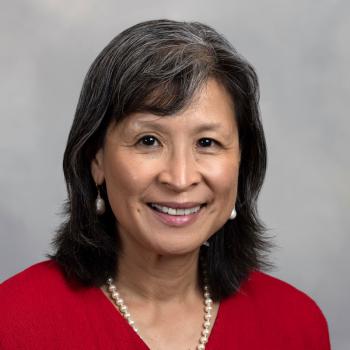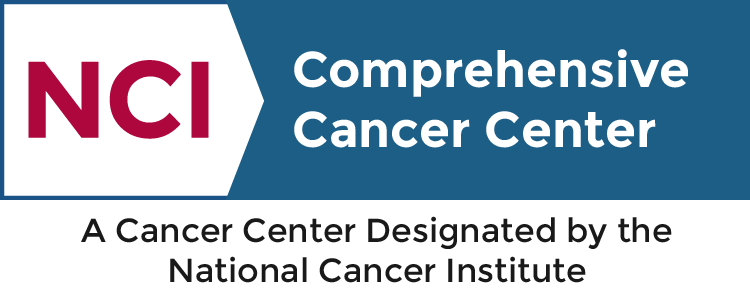Stanford Cancer Institute member Quynh-Thu Le, MD, is the chair of the Stanford Department of Radiation Oncology and is recognized as a national leader in clinical trial research. We spoke with her about the research she’s most excited about and advice she would give early-career cancer researchers.
What research are you currently conducting that you are most excited about?
I’m most excited about research that would likely impact the care of cancer patients.
One of my primary areas of focus is leading clinical trials. I have the privilege of chairing the NRG Oncology group, which holds the distinction of being the largest adult group in the National Clinical Trial Network (NCTN). NRG Oncology consists of three legacy groups: the Radiation Therapy Oncology Group (RTOG), the National Surgical Adjuvant Breast and Bowel Project (NSABP), and the Gynecologic Oncology Group (GOG). We design large phase II-III clinical trials that are supported by the National Cancer Institute (NCI). Our group focuses primarily on gender-specific malignancies and localized or locoregionally advanced cancers that encompass seven different disease sites (central nervous system, head and neck, thoracic, breast, gastrointestinal, genitourinary, and gynecologic malignancies, as well as other rare tumors). Collaborating with national and international experts, we strive to generate practice-changing trials that are being studied across North America and beyond, with the exciting potential to redefine the standard of care for cancer patients.
In addition to my involvement in clinical trials, I actively engage in laboratory research. The focus of my lab centers on identifying pathways and markers that can guide and optimize radiotherapy for head and neck cancer. For instance, our research has revealed that radiation treatment can increase the secretion of Galectin-1, a negative immunomodulator and pro-metastatic protein. This discovery highlights the potential of Galectin-1 to impede the effectiveness of radiotherapy. Consequently, we are currently exploring approaches to either degrade this protein or block its function, aiming to enhance the success of radiotherapy in treating cancer. Similarly, we have also identified that mutations in the NRF2/KEAP1 pathway lead to radiation resistance in head and neck cancer. To address this, we are collaborating with several groups on campus to develop methods to degrade mutant proteins in tumors displaying these specific mutations.
While radiation therapy demonstrates high efficacy against head and neck cancer, it can cause late side effects in patients, with salivary gland damage being the most common. A major focus of my laboratory is to investigate ways to reduce the toxicity associated with radiation therapy. Through collaboration with Dr. Daria Mochly-Rosen's group, we have identified a novel drug that shows promise in preventing salivary damage resulting from radiation treatment in mice. Currently, we are conducting a phase I trial in head and neck cancer patients to determine the optimal dosage for further investigation in a larger study.
What do you consider your greatest professional achievement so far?
As a Department Chair at Stanford and the Group Chair of NRG Oncology, I have the privilege of mentoring numerous trainees, junior faculty members, and early career investigators at both local and national levels. I consider this to be my most significant accomplishment, as it holds the potential to create a cascading effect. The researchers I guide can extend their impact by advancing crucial research, ultimately benefiting a larger number of patients. Moreover, they can pass on their knowledge and expertise to mentor other aspiring trainees and young investigators, fostering continuous growth in the field of cancer research and care.
What has been the biggest challenge and the biggest reward during your time as the Chair of Stanford’s Department of Radiation Oncology?
One of the biggest challenges I encountered was acquiring the skills necessary for effective leadership. As a faculty member, I did not receive any explicit training for a significant administrative role. However, along the way, I have discovered that understanding diverse perspectives and cultivating collaborations offer the most gratifying outcomes. By supporting researchers, nurturing departmental growth, and impacting patients, I have been able to contribute meaningfully to the department.
What advice would you give to MD students and early career researchers on growing their research careers?
First, know what your true north is and what you’re here for, as in identify your true purpose and understand what truly motivates and drives you. Create personal principles that align with your values and stay committed to them. Most importantly, focus your research or clinical efforts on an area that ignites your passion, as this will sustain your dedication and enhance your potential for success. Finally, seek out mentors who can support you. I was blessed to have highly supportive mentors who significantly contributed to my career. Other important attributes for future success include a strong drive, resilience, and the ability to learn from past failures. It is not uncommon for MD students and early career researchers to have experienced consistent success throughout their lives, making it crucial for them to embrace challenges as learning opportunities and adapt to new situations.
If you had to pick only one song to listen to and only one movie to watch for the rest of your life, what would you pick?
I would pick Monty Python and the Holy Grail. It was my first exposure to Monty Python, and since then, I have been hooked. For the song, I’d pick The Eagles' “Hotel California,” which is my college favorite.
June 2023
By Katie Shumake



